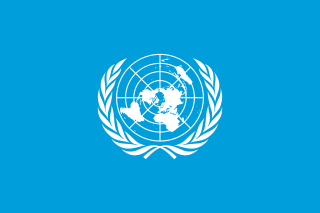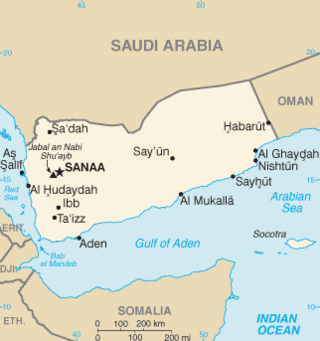Related Research Articles
Good governance is the process of measuring how public institutions conduct public affairs and manage public resources and guarantee the realization of human rights in a manner essentially free of abuse and corruption and with due regard for the rule of law. Governance is "the process of decision-making and the process by which decisions are implemented ". Governance in this context can apply to corporate, international, national, or local governance as well as the interactions between other sectors of society.

The heavily indebted poor countries (HIPC) are a group of 39 developing countries with high levels of poverty and debt overhang. Because of these factors, the International Monetary Fund (IMF) and the World Bank have classified them as eligible for special assistance.
Governance is the overall complex system or framework of processes, functions, structures, rules, laws and norms born out of the relationships, interactions, power dynamics and communication within an organized group of individuals. It sets the boundaries of acceptable conduct and practices of different actors of the group and controls their decision-making processes through the creation and enforcement of rules and guidelines. Furthermore, it also manages, allocates and mobilizes relevant resources and capacities of different members and sets the overall direction of the group in order to effectively address its specific collective needs, problems and challenges.

In the United Nations, the Millennium Development Goals (MDGs) were eight international development goals for the year 2015 created following the Millennium Summit, following the adoption of the United Nations Millennium Declaration. These were based on the OECD DAC International Development Goals agreed by Development Ministers in the "Shaping the 21st Century Strategy". The Sustainable Development Goals (SDGs) succeeded the MDGs in 2016.
Structural adjustment programs (SAPs) consist of loans provided by the International Monetary Fund (IMF) and the World Bank (WB) to countries that experience economic crises. Their stated purpose is to adjust the country's economic structure, improve international competitiveness, and restore its balance of payments.
Aid effectiveness is the degree of success or failure of international aid. Concern with aid effectiveness might be at a high level of generality, or it might be more detailed.

Poverty reduction, poverty relief, or poverty alleviation is a set of measures, both economic and humanitarian, that are intended to permanently lift people out of poverty. Measures, like those promoted by Henry George in his economics classic Progress and Poverty, are those that raise, or are intended to raise, ways of enabling the poor to create wealth for themselves as a conduit of ending poverty forever. In modern times, various economists within the Georgism movement propose measures like the land value tax to enhance access to the natural world for all. Poverty occurs in both developing countries and developed countries. While poverty is much more widespread in developing countries, both types of countries undertake poverty reduction measures.
Private sector development (PSD) is a term in the international development industry to refer to a range of strategies for promoting economic growth and reducing poverty in developing countries by building private enterprises. This could be through working with firms directly, with membership organisations to represent them, or through a range of areas of policy and regulation to promote functioning, competitive markets.

Yemen ranked 150 out of 177 in the 2006 Human Development Index and 121 out of 140 countries in the Gender Development Index (2006). In 2005, 81 percent of Yemen's school-age population was enrolled in primary school; enrollment of the female population was 74 percent. Then in 2005, about 46 percent of the school-age population was enrolled in secondary school, including only 30 percent of eligible females. The country is still struggling to provide the requisite infrastructure. School facilities and educational materials are of poor quality, classrooms are too few in number, and the teaching faculty is inadequate.
The Bretton Woods Project works as a networker, information-provider, media informant and watchdog to scrutinise and influence the World Bank and International Monetary Fund (IMF). Through briefings, reports and the bimonthly digest Bretton Woods Update, it monitors projects, policy reforms and the overall management of the Bretton Woods institutions with special emphasis on environmental and social concerns.

Communication for Development (C4D) is all the different types of communication that need to take place in societies if sustainable democratic development is to occur.
Local economic development (LED) is an approach to economic development, of note in the developing world that, as its name implies, places importance on activities in and by cities, districts and regions. Local economic development combines economic development activities, urban planning, infrastructure development and social development activities to improve local conditions. LED encompasses a range of disciplines including physical planning, economics and marketing, all with the goal of building up the economic capacity of a local area to improve its economic future and the quality of life for all.
The Federal Ministry of Budget and Economic Planning is one of the Federal Ministries of Nigeria.
Participatory development (PD) seeks to engage local populations in development projects. Participatory development has taken a variety of forms since it emerged in the 1970s, when it was introduced as an important part of the "basic needs approach" to development. Most manifestations of public participation in development seek "to give the poor a part in initiatives designed for their benefit" in the hopes that development projects will be more sustainable and successful if local populations are engaged in the development process. PD has become an increasingly accepted method of development practice and is employed by a variety of organizations. It is often presented as an alternative to mainstream "top-down" development. There is some question about the proper definition of PD as it varies depending on the perspective applied.
Community-driven development (CDD) is an initiative in the field of development that provides control of the development process, resources and decision making authority directly to groups in the community. The underlying assumption of CDD projects are that communities are the best judges of how their lives and livelihoods can be improved and, if provided with adequate resources and information, they can organize themselves to provide for their immediate needs. CDD projects work by providing poor communities with direct funding for development with the communities then deciding how to spend the money. Lastly, the community plans and builds the project and takes responsibility for monitoring its progress.
Participatory evaluation is an approach to program evaluation. It provides for the active involvement of stakeholder in the program: providers, partners, beneficiaries, and any other interested parties. All involved decide how to frame the questions used to evaluate the program, and all decide how to measure outcomes and impact. It is often used in international development.

In the United Nations, the Post-2015 Development Agenda was a set of talks and discussions that led to the creation of the 2016 Sustainable Development Goals. This replaced the 2015 Millennium Development Goals.
After its independence from Portugal in 1975, the Mozambique government established a primary health care system that was cited by the WHO as a model for other developing countries. Over 90% of the population had been provided with vaccination. During the period of the early 1980s, around 11% of the government budget was targeted on health care. The Mozambique civil war led to a great setback in the primary health system in Mozambique. RENAMO's attack on government infrastructures included health and education systems from 1980 to 1992.
The Poverty Reduction Strategy (PRS) is a country-based process which leads to the formation of a Poverty Reduction Strategy Paper. The paper is then presented to major donors such as the International Monetary Fund (IMF) and the World Bank for approval. Approval allows foreign aid to be given to the country. Approval was given to Honduras on August 20, 2001. Honduras' goal was to reduce the rate of poverty in the nation from 70 percent to 40 percent by 2015. The PRS was a continuation of the "Master Plan for Reconstruction and National Transformation." The PRS had an annual budget of 4.4 million Honduran lempiras which was distributed in about 300 million lempira lots to each of 18 of the Honduran Government departments. The funds were to be used for specific projects aimed at benefiting communities.
Wahidullah Waissi is a career Afghan diplomat. He is now serving as the ambassador of the Islamic Republic of Afghanistan to the Commonwealth of Australia, New Zealand and Republic of Fiji. After Taliban's takeover in August 2021, the Ambassador and the Embassy of Islamic Republic of Afghanistan in Canberra continue in fulfilling diplomatic responsibilities under the Vienna Convention of Diplomatic Relations of 1961, operating outside the realm of Taliban influence.
References
- 1 2 3 4 5 6 7 8 9 "Factsheet -- Poverty Reduction Strategy Papers". IMF.
- 1 2 3 4 5 6 7 8 9 Dijkstra, Geske (2011). "The PRSP Approach and the Illusion of Improved Aid Effectiveness: Lessons from Bolivia, Honduras and Nicaragua". Development Policy Review. 1. 29: 111–133. doi:10.1111/j.1467-7679.2011.00522.x. S2CID 154715187.
- 1 2 3 4 5 Driscoll, Ruth; Alison Evans (2005). "Second-Generation Poverty Reduction Strategies: New Opportunities and Emerging Issues". Development Policy Review. 23 (1): 5–25. doi:10.1111/j.1467-7679.2005.00274.x. S2CID 153404316.
- 1 2 3 4 Lazarus, Joel (2008). "Participation in Poverty Reduction Strategy Papers: reviewing the past, assessing the present and predicting the future". Third World Quarterly. 29 (6): 1205–1221. doi:10.1080/01436590802201188. S2CID 58946172.
- 1 2 3 Klugman, Jeni. "PRSP Sourcebook: Overview" (PDF). World Bank.
- 1 2 3 4 "Making PRSP Inclusive". CBM.
{{cite web}}: Missing or empty|url=(help) - ↑ Craig, David; Doug Porter (2003). "Poverty Reduction Strategy Papers: A New Convergence". World Development. 31 (1): 53–69. doi:10.1016/s0305-750x(02)00147-x.
- 1 2 3 4 Seshamani, Venkatesh (March 2005). "The same old wine in the some old bottle? Content, process and donor conditionalities of the PRSP" (PDF).
{{cite journal}}: Cite journal requires|journal=(help) - 1 2 3 4 5 6 Kamruzzaman, Palash (February 2009). "Poverty Reduction Strategy Papers and the rhetoric of participation". Development in Practice. 19 (1): 61–71. doi:10.1080/09614520802576385. S2CID 154376832.